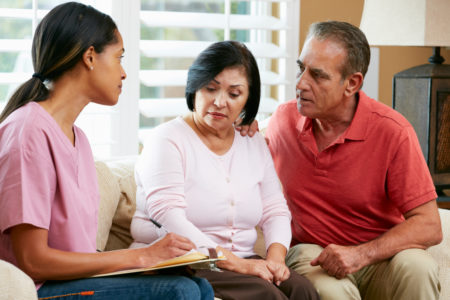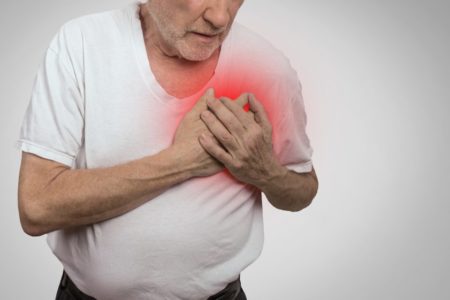Share On Social!
The spread of coronavirus, COVID-19, is now a global pandemic.
Health officials are working tirelessly to inform the public. They are working on a fast-paced method for widespread testing, and doing everything possible to slow the spread of the coronavirus.
What is still scary? This disease impacts those with underlying conditions more significantly, especially Latinos who suffer vast health disparities.
“People with diabetes, heart disease, lung disease and other serious underlying conditions are more likely to develop serious outcomes, including death [due to coronavirus],” said Dr. Nancy Messonnier, director of the CDC’s National Center for Immunization and Respiratory Diseases, CNBC reports.
Coronavirus COVID-19’s Impact on People With Underlying Illnesses
Reported illnesses of the coronavirus (COVID-19) range from mild symptoms to severe illness and even death.
CDC reports that symptoms may appear 2-14 days after exposure. They include fever, cough, and shortness of breath. Emergency warning signs include trouble breathing, persistent pain/pressure in the chest, new confusion, and bluish lips or face.
People more at risk of coronavirus are older adults, who comprise 8 of 10 coronavirus-related deaths in the Unites States. Also at higher risk are people with asthma, HIV, and these underlying illnesses:
- Cancer
- Diabetes
- Hypertension (high blood pressure)
- Heart disease
- Chronic respiratory disease (such as lung disease or asthma)
Smoking also may put people at higher risk of coronavirus infection.
“It’s fair to say that, as the trajectory of the outbreak continues, many people in the United States will at some point in time, either this year or next, be exposed to this virus and there’s a good chance many will become sick,” Messonnier said.
Coronavirus COVID-19’s Impact on People with Cancer
People who have cancer often have higher risk of getting an infection because their immune systems are weakened by cancer and its treatments.
Among the 44,000 positive cases of COVID-19 in China, 6% of patients with cancer died last month compared to the .09% of those who had no underlying conditions.
 “We found that patients with cancer might have a higher risk of COVID-19 than individuals without cancer,” according to a recent study in Lancet.
“We found that patients with cancer might have a higher risk of COVID-19 than individuals without cancer,” according to a recent study in Lancet.
Expert says that people with cancer might be more likely to get coronavirus infections because of:
- Cancer itself
- Certain types of cancer treatment
- Poor nutrition
- Other health problems or medications that aren’t related to cancer
They also found patients with cancer had “poorer outcomes from COVID-19” and a “higher risk of severe events,” like requiring a breathing machine, according to Lancet study.
Researchers thus propose three major strategies amid the coronavirus outbreak:
- An intentional postponing of patient adjuvant chemotherapy or elective surgery for stable cancer should be considered in endemic areas.
- Stronger personal protection provisions should be made for patients with cancer or cancer survivors.
- More intensive surveillance or treatment should be considered when patients with cancer are infected with SARS-CoV-2, especially in older patients or those with other comorbidities.
“[The coronavirus situation is] a timely reminder to physicians that more intensive attention should be paid to patients with cancer, in case of rapid deterioration,” according to the researchers.
Coronavirus COVID-19’s Impact on People with Diabetes and Heart Disease
With COVID-19, people who are older and people with underlying health conditions—including diabetes and heart disease—appear to be at higher risk for significant complications.
 Cerebrovascular diseases and diabetes are at increased risk of death related to coronavirus, according to a recent study published in Lancet.
Cerebrovascular diseases and diabetes are at increased risk of death related to coronavirus, according to a recent study published in Lancet.
“Case fatality rates for comorbid patients are materially higher than the average population” in China, according to a recent American College of Cardiology clinical bulletin:
- Cancer: 5.6%
- Diabetes: 7.3%
- Hypertension: 6%
- Heart disease: 10.5%
- Chronic respiratory disease: 6.3%
“Published case reports from the Chinese Centers for Disease Control indicate patients with underlying comorbid conditions have a heighted risk for contracting COVID-19 and a worse prognosis,” according to the bulletin. “Depending on the report, between 25% and 50% of COVID-19 patients present with underlying conditions.”
Addressing Coronavirus in Latino Populations is Vital
Latinos are already the most uninsured group.
Despite national efforts to reduce racial/ethnic disparities, U.S. Latinos continue to share a disproportionate burden of diabetes, certain types of cancer, and heart-related morbidity and mortality.
Latinos have far higher rates of diabetes (16.9%) than the overall United States (9.3%).

In fact, 1 in 2 Latinos is at risk for developing type 2 diabetes during their lifetime.
Latinos are also more likely to experience complications from the disease and, according to the U.S. Department of Health & Human Services (HHS) Office of Minority Health, they have a higher death rate from diabetes and certain types of cancer.
Cancer is the No. 1 killer of Latinos.
Latinos have higher rates of cancers associated with infectious agents. These include stomach, uterine cervix, gallbladder, and liver cancers —as well as acute lymphocytic leukemia. They face a 142% projected rise n cancer cases.
“As the disease spreads around the continent, journalists and activists worry it could spell disaster for migrants waiting for immigration court hearings near the U.S.,” according to Latino USA.
Millions of low-income older Latino adults who lack access to healthy food and adequate nutrition on a daily basis
All of these issues could be complicated in the wake of the coronavirus pandemic.
What Should We Do about Coronavirus COVID-19 and Underlying Conditions?
CDC experts says that cases of COVID-19 will probably increase over time. Because this is a rapidly changing situation, it’s wise to pay attention to the CDC’s updates to continue assessing the risks.
Patients and their caregivers should take extra precautions to lower their risk of getting COVID-19.
“If I’m older, and have underlying illnesses, then I’m the kind of person that this virus makes more seriously and even gravely ill.,” said Dr. William Schaffner, an infectious disease specialist at Vanderbilt University.
The CDC has specific recommendations for people at risk for serious illness, including COVID-19 infection.
Defensive steps everyone, specifically people at high risk, can take include, according to WHO:
- Avoid people who are sick
- Wash hands thoroughly with soap and water for at least 20 seconds
- Cover your mouth when you cough or use the inside of your elbow
- Cover your nose when you sneeze or use the inside of your elbow
- Avoid touching your eyes, nose, and mouth
- Clean surfaces touched often like doorknobs, handles, steering wheels, or light switches with a disinfectant to remove the virus
- People at higher risk should practice social distancing by avoiding large gatherings and limiting travel.
The CDC has compiled tips on what people can do to help slow the spread of the new coronavirus and make homes, schools, and workplaces safer. This includes not shaking hands and avoiding large crowds, cruise travel, and non-essential travel.
Learn more about the coronavirus outbreak and it’s implications concerning health.
By The Numbers
142
Percent
Expected rise in Latino cancer cases in coming years



